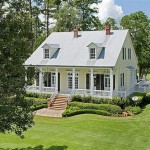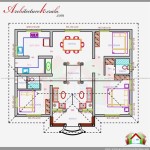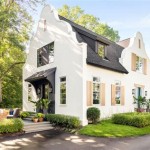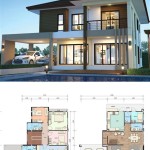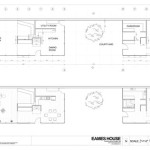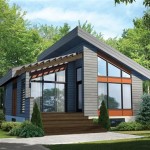Cul De Sac House Floor Plans: Designing for Privacy and Community
Cul de sacs offer a unique blend of privacy and community, making them highly desirable locations for homeowners. This distinct setting influences house design, requiring floor plans that maximize the advantages of the cul de sac layout while mitigating potential drawbacks. Understanding these considerations is crucial for selecting or designing a home that truly complements cul de sac living.
One of the primary benefits of a cul de sac is reduced traffic. This creates a safer environment, particularly for families with children. Floor plans can capitalize on this by incorporating features like front porches or large windows facing the street, fostering a sense of connection with neighbors while maintaining a safe distance from through-traffic. Conversely, designs should also consider privacy, as the curved layout can sometimes lead to increased visibility from neighboring homes. Strategic placement of windows and outdoor living spaces can help balance these competing needs.
The shape of the lot itself also plays a significant role in dictating the ideal floor plan. Cul de sac lots are often pie-shaped, wider at the back and tapering towards the street. This can present both challenges and opportunities. While the narrower front yard may limit landscaping options, the wider backyard provides ample space for outdoor amenities like patios, pools, or play areas. Floor plans should be designed to maximize the use of this valuable backyard space, creating a seamless transition between indoor and outdoor living.
Garage placement is another crucial consideration in cul de sac house plans. Side-entry garages are a popular choice, as they minimize the visual impact of the garage door from the street and allow for more aesthetically pleasing facades. However, the lot's shape and size may dictate whether a side-entry garage is feasible. Alternatively, front-entry garages, while more common, can be strategically designed with landscaping and architectural details to minimize their prominence and enhance curb appeal.
Orientation within the cul de sac also influences floor plan design. Homes located at the end of the cul de sac often enjoy the largest lots and the most privacy. Floor plans for these homes can prioritize views and access to the backyard, creating a secluded oasis. Homes located on the curve of the cul de sac may need to address potential noise from turning vehicles and consider window placement for optimal privacy. In either case, careful consideration of the home’s position within the cul de sac should inform design choices.
The desired lifestyle of the homeowner significantly influences the choice of floor plan. Families with children may prefer designs with dedicated playrooms, multiple bedrooms, and open-plan living areas that facilitate interaction. Empty nesters or retirees might prioritize single-story living, accessible design features, and smaller, more manageable spaces. Understanding the needs and priorities of the occupants is essential for selecting a floor plan that supports their desired lifestyle.
Natural light is a desirable feature in any home, and cul de sac homes are no exception. Due to the curved layout, homes may have varying degrees of sunlight exposure throughout the day. Floor plans should be designed to maximize natural light penetration, taking into account the orientation of the lot and the surrounding homes. Large windows, skylights, and open floor plans can help to brighten the home and create a more welcoming atmosphere.
Storage solutions are an often-overlooked but crucial aspect of any floor plan. Cul de sac homes, like any other, require ample storage space to accommodate the belongings of their occupants. Floor plans should incorporate well-designed closets, pantries, and other storage areas to maintain a clutter-free and organized living environment. This is particularly important in smaller homes or those with open floor plans where storage can be more challenging to integrate seamlessly.
Landscaping considerations should be incorporated into the overall design plan for a cul de sac home. The front yard, while potentially smaller, presents an opportunity to enhance curb appeal and create a welcoming entrance. The larger backyard provides ample space for outdoor living areas, gardens, and recreational features. Integrating the landscaping plan with the house design ensures a cohesive and aesthetically pleasing result.
Finally, local building codes and regulations play a crucial role in determining the feasibility of specific floor plans. Setback requirements, height restrictions, and other regulations can impact design choices. It's essential to consult with local authorities and ensure that any proposed floor plan complies with all applicable building codes before proceeding with construction.

Cul De Sac Angle House

House Along Cul De Sac T2p Architects Office Archdaily

Cul De Sac Houses

Ultimateplans Com House Plan Home Floor Number 661224

Two Story Craftsman House Plan For Cul De Sac Lot

Perfect House For The V Shaped Lot 4247mj Architectural Designs Plans

Two Story Craftsman House Plan For Cul De Sac Lot

U4572l House Plans Over 700 Proven Home Designs By Korel

Floor Plans Prairie Style Houses House

Residencia Cul De Sac Hurika Kulasinghe Architect Archdaily Colombia

